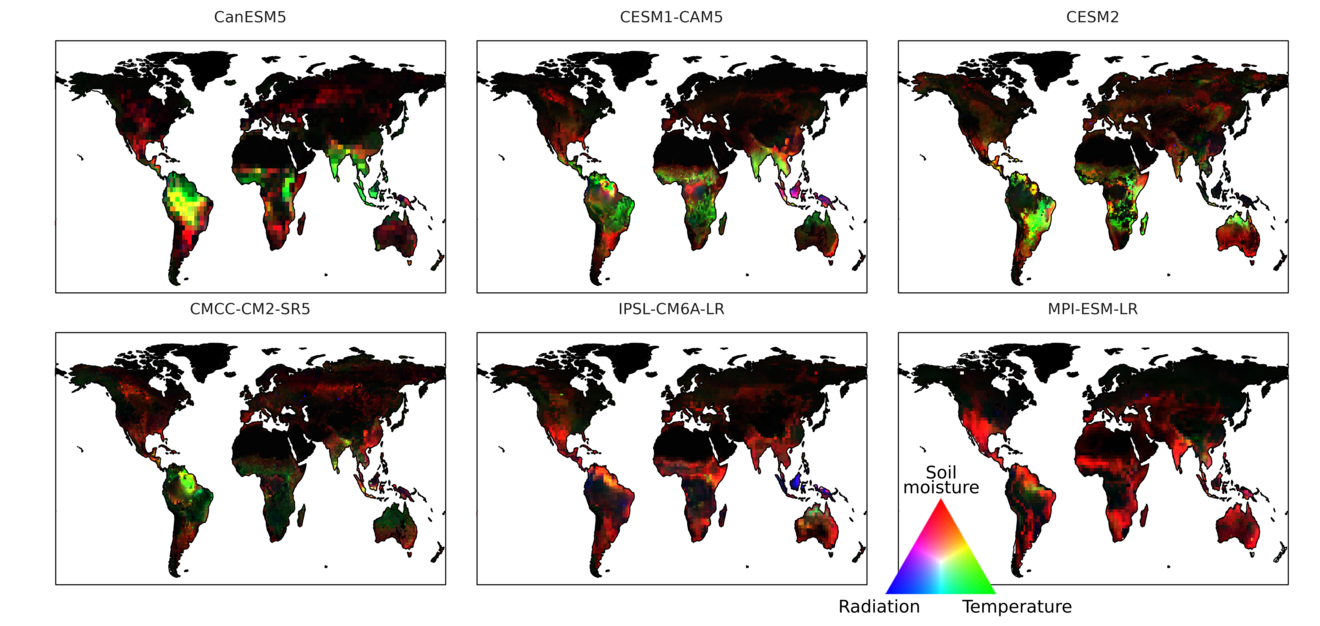Towards improved CO2 predictions

How much will the concentration of atmospheric CO2 change in the coming years? Being able to answer this question would allow policy makers to evaluate climate change mitigation measures in real time. The actual amount of CO2 concentration increase depends not only on anthropogenic emissions, but also on the terrestrial carbon sink. Several studies have shown that Earth system models are able to predict the terrestrial carbon sink, and thus CO2, for two years. On the other hand, there is still a high degree of uncertainty as to which climate variables generate the carbon sink variability in the first place. To investigate how this uncertainty affects the predictability of CO2, scientists from the Max-Planck-Institute for Meteorology collaborated with an international team to investigate the mechanisms behind CO2 predictability using six Earth system models. In particular, they addressed the question of how the climate variables temperature, soil moisture and radiation influence the variability of terrestrial carbon fluxes on the one hand, and provide predictability on the other.
There is high agreement on the mechanisms that provide CO2 predictability among the models. Up to one-third of the carbon fluxes that are driven by soil moisture variations are predictable one year in advance, while carbon fluxes driven by radiation are hardly predictable.
In contrast to predictability, however, the scientists found more uncertainty in the processes that drive the variations of atmospheric CO2. All the studied models have variability hotspots of carbon fluxes in the tropics, but there is little agreement on the specific location of these hotspots. As a result, different regions are responsible for driving the interannual variations in CO2 concentration. Large differences are found in the role of the Amazon Basin, Central South America, South Africa, and Australia, where the inconsistency in carbon fluxes variability is particularly high. Apart from the spatial origin of carbon flux anomalies, it also remains unclear what is causing the anomalies. While soil moisture is the main driver of carbon flux variability in two of the studied models, temperature plays a larger role in the other models. These differences in the driving forces of carbon anomalies also determine the overall predictability of CO2. The more sensitive terrestrial carbon sinks are to radiation, the lower the overall predictability of atmospheric CO2.
The ultimate limitation to predicting atmospheric CO2 will be the chaotic nature of weather and climate. Once this limitation is reached, further progress will be negligible. However, this study shows that we are currently limited by the variability of terrestrial carbon fluxes. The potential for predicting atmospheric CO2 is not yet exhausted, and improvements in our understanding of the sensitivity of the carbon sink will lead to better CO2 predictions.
Original publication
Dunkl, I., Lovenduski, N., Collalti, A., Arora, V. K., Ilyina, T., and Brovkin, V.: Gross primary productivity and the predictability of CO2: more uncertainty in what we predict than how well we predict it, Biogeosciences, 20, 3523–3538, https://bg.copernicus.org/articles/20/3523/2023/, 2023.
Contact
Dr. István Dunkl
Max Planck Institute for Meteorology
istvan.dunkl@mpimet.mpg.de
